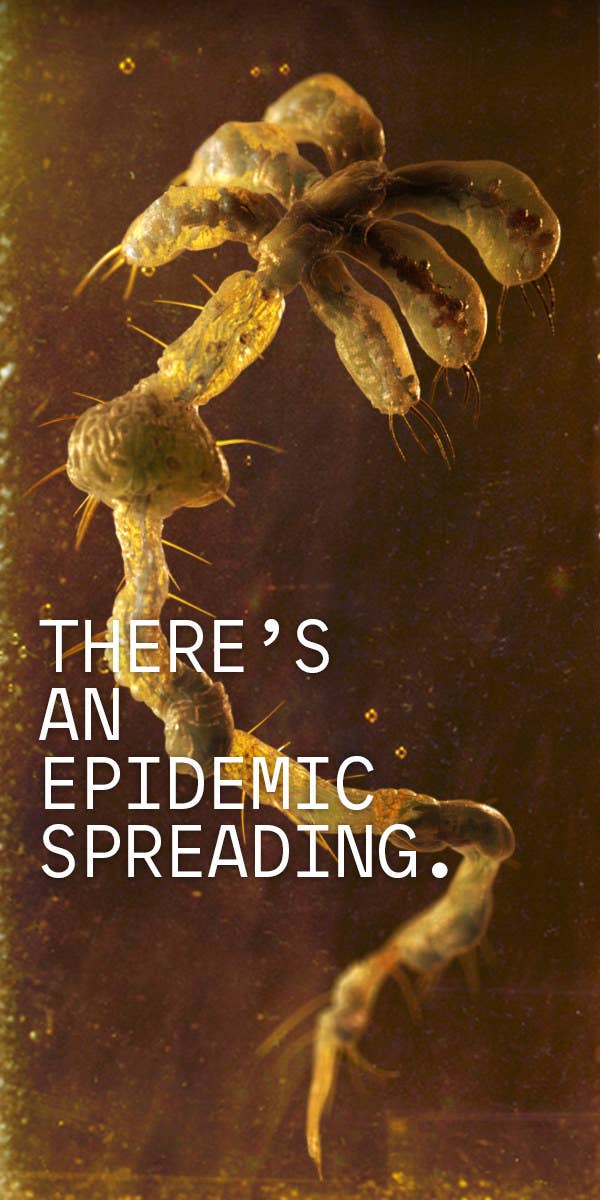The FDA has launched a campaign to discourage teen vaping, which includes posters and videos that show young people with squiggly parasites on their faces.

The posters will be placed in prominent areas of high schools, including restrooms, as the FDA attempts to address the "epidemic" of teen e-cigarette use.
The ads show parasitelike creatures or teens with wormlike parasites under the skin on their faces, with the tagline "There's an epidemic spreading." They also mention specific harms, rather than trying to discourage vaping in general.
The epidemic, of course, is not literal parasites but the rise in teens who use e-cigarettes.
In 2016, the surgeon general reported that there was a 900% increase in e-cigarette use among high school students between 2011 and 2015. The FDA said more than 2 million middle and high school students had used e-cigarettes in 2017, so reversing this trend may be an uphill battle.

A video ad for the campaign specifically shows an e-cigarette that uses a cartridge system, like the wildly popular Juul. The device has a cultlike following and has been accused of trying to get teens hooked with its marketing and flavor options that include mango, fruit medley, and creme brulee.
E-cigarettes work by heating a liquid that contains nicotine into a vapor, which is then inhaled. The liquid typically contains glycerol and propylene glycol, substances that deliver nicotine and help preserve and retain moisture. But vape liquid also can include flavoring and other ingredients. A study published earlier this year found higher levels of chemical toxicants, some of which are carcinogenic, in the urine of teens who vape.
One of the new ads warns of diacetyl, a chemical used for its buttery flavor. Inhaling the chemical is known to cause bronchiolitis obliterans, or popcorn lung, an irreversible condition characterized by scarring of the lungs, shortness of breath, coughing, and wheezing. It was first seen in people who were exposed to large amounts of diacetyl because they worked in microwave popcorn manufacturing plants.
Many e-cigarette makers have moved away from using the chemical, but it can still be hard to know what exactly is in purchased liquids.
Studies have also shown that e-cigarettes can be a gateway for teens to take up traditional cigarettes.

"E-cigarettes have become an almost ubiquitous — and dangerous — trend among youth that we believe has reached epidemic proportions," said FDA Commissioner Scott Gottlieb in a statement.
"The mandate to reverse this trend in youth addiction to nicotine is one of my highest priorities. I’m employing every tool at my disposal in these efforts. As a parent, a survivor of cancer, and someone entrusted with responsibilities to protect our nation’s kids from certain dangers — I won’t allow this rising youth use to continue on my watch."
The e-cigarette market remains largely unregulated, something the FDA said it doesn't plan to correct until 2022. As a result, several major health groups — including the American Academy of Pediatrics and the American Lung Association — filed a lawsuit in the spring alleging the lack of regulation is leaving teens open to nicotine use.

